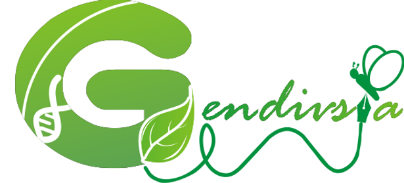Publication Ethics
Publication Ethics and Malpractice Statement
JSMARTech : Journal of Smart Bioprospecting and Technology is an open access scientific journal with intention to be a leading peer-reviewed platform and an authoritative source of information. We publishes a manuscript written in English for original research articles, short communications, and review articles focused on research of bioprospecting and technology with covering aspects of biochemical, genetics, biotechnology, bioinformatics, natural product, metabolism, biopharmaceuticals, biodiversity, systematics, biomedical, molecular biology, molecular genetics, nutrigenomic, herbal medicine, DNA barcoding, nanotechnology, agriculture, and bioremediation that has neither been published elsewhere in any language, nor is it under review for publication anywhere. This following statement clarifies ethical behavior of all parties involved in the act of publishing an article in this journal, including the authors, the editors, the reviewers, and the publishers. This statement is based on COPE’s Best Practice Guidelines.
Plagiarism Policy
Plagiarism, copying of ideas, text, data, and other creative works without proper citation is a serious violation. Plagiarism screening will be conducted by the Editorial Board using Turnitin software. JSMARTech : Journal of Smart Bioprospecting and Technology defines plagiarism as a case in which a paper reproduces another work with at least 15% similarity and without citation. The author(s) will be asked a chance for rebuttal if evidence of plagiarism is found before/after acceptance or after the publication of the paper. If the arguments are not found to be satisfactory, the manuscript will be drawn back and the author(s) sanctioned from publishing papers for a period to be determined by the responsible Editor(s).
Ethical Oversight
If the research work involves chemicals, human, animals, procedures or equipment that have any unusual hazards inherent in their use, the author must clearly identify these in the manuscript in order to obey ethical conduct of research using animals and human subjects.
If the research involves confidential data and of business/marketing practices, authors should clearly justify this matter whether the data or information will be hidden securely or not.
Retraction
The papers published in the JSMARTech : Journal of Smart Bioprospecting and Technology will be considered to retract in the publication if:
1. They have clear evidence that the findings are unreliable, either as a result of misconduct (e.g. data fabrication) or honest error (e.g. miscalculation or experimental error)
2. The findings have previously been published elsewhere without proper crossreferencing, permission, or justification (i.e. cases of redundant publication)
3. It constitutes plagiarism
4. It reports unethical research
The mechanism of retraction follows the Retraction Guidelines of the Committee on Publication Ethics (COPE) which can be accessed at Retraction guidelines.
EDITOR(S)’S DUTIES
- Publication options. The editor(s) decide whether or not to accept and publish an article. The editor selected the top outcome. If the first editor accepts the piece, the reviewers' opinions will determine the second result. Editors compile remarks from reviewers and base their conclusions on them. Editors may base their choices on a variety of things, such as the editorial board's rules about the goals and scope of the journal, novelties, legal requirements, libel, copyright violations, and plagiarism.
- Fair play and discretion in handling the article. Regardless of the author(s)' race, gender, sexual orientation, religion, ethnicity, citizenship, or political ideologies, editors are obligated to carefully analyze every article they receive. All information must be examined and altered in a discreet manner. Editors and journal staff are prohibited from discussing or disclosing any information about an article that has been submitted to the journal, with the exception of authors, reviewers, potential reviewers, other editorial advisers, and the publisher.
- Interest conflicts. Without the author's express written permission, the editor may not utilize any disclosed unpublished materials—including any sensitive information and ideas derived from peer review—for their study. When editors have a conflict of interest stemming from a cooperative relationship or other ties with one or more of the authors, companies, or institutions, they must ask a co-editor, associate editor, or other editors to evaluate and take into account the manuscript. The authors should address any pertinent conflicts of interest, including publishing any revisions discovered after the work has been published. If necessary, the necessary action, such as a publication, must be made.
- Investigations and grievances. The editor should work with the publisher to take reasonable action, such as revision, correction, retraction, statement of concern, and other remarks that are pertinent, when an article is submitted or published when there is a complaint about the ethical issues raised. However, in order to act honestly, each action must be followed by further confirmations and interactions with the authors.
REVIEWER(S)’S DUTIES
- The review process's roles, promptness, confidentiality, and fairness. The reviewers assist editors by providing objective assessments free from personal criticism and suggestions/ideas to enhance the article's qualities through the peer-reviewing process. There is no communication between reviewers and authors; instead, it solely occurs between reviewers and editors. All communications must be made in a timely manner via a formal scholarly communication. Reviewer must contact editor as soon as possible if they believe they are not qualified to review the article. Reviewers just offer suggestions; the editor makes the final call regarding publication. The article and every document used in the peer review process are both private. Without the editor's approval, the reviewer is not allowed to talk to authors or anybody else.
- Acknowledgment. While presenting thoughts and statements based on a specific result, inference, or defense, the reviewer should point out pertinent published works that the authors have not cited. To the best of the reviewer's knowledge, the reviewer informs the author of any noticeable parallels or overlaps between the article under evaluation and any other published materials.
- Conflict of interest. Any unpublished materials provided in a submitted paper may not be used by the reviewer for their own work without the author's express written consent and the editor's approval. Peer review is a privileged procedure in its entirety. Ideas must therefore be kept private and confidential and must not be utilized for the reviewer's gain. Reviewers shouldn't consider their affiliations with any of the authors, groups, or companies connected to the articles when conducting their reviews.
AUTHOR(S)’S DUTIES
- Important. Only original content—that is, content that has never been published before in any language and that is not currently being considered for publication anywhere—was submitted by the author(s). The focus and scope part of the article must explain the scope of the piece.
- Scientific report submitted by authors. The authors are required to provide a synopsis of their original research, which should be accurate, objective, and relevant. The report should accurately portray the underlying data, have sufficient details and citations to allow someone else to repeat the work. It is unprofessional and sometimes unethical to make false or purposefully erroneous claims. Truthful, impartial, precise, and objective data are required.
- Data security and accessibility. The author's submitted raw data for the article may be requested for editorial review. Authors should be willing to make these data available to the public if at all practicable. They should be prepared to keep these data for a while after posting in any case. Authors have the option to request, agree upon, and confirm with editors the public access of the supplied data during the peer-review process.
- Submission of article against plagiarism and originality. The writers should make sure that their work is original and distinctive. Authors should make sure that they have correctly cited or quoted any ideas or words they need to draw from other papers. All forms of plagiarism are inappropriate because they violate the ethical standards for scientific publication. Plagiarism can take many different forms, including "passing off" another person's paper as the author's own, copying or paraphrasing substantial chunks of another paper without acknowledging the source or including citations, and claiming the results of research that was conducted by another person.
- Authorship (who must be included in the article). The described study's conception, design, implementation, or interpretation were all considerably aided by the authors. There are three types of authors: first author (the name that appears first in the list of authors), co-authors, and corresponding authors (names with an asterix and an email address). The submission of the paper for publication requires the consent of all authors.
- Recognition and Acknowledgements. The acknowledgements portion of the article must include all mentions and acknowledgments. The authors are required to acknowledge and appreciate all contributors, including those who provided private information, letters, chats, or discussions, citations for publications that significantly contributed to our understanding of the work being described, grant applications, and organizations that supported the research and article.
- Interest conflicts. Any significant financial or other conflicts of interest (including author-author conflicts of interest) that might be deemed to have an impact on the conclusions or interpretation of a study must be disclosed by all authors in the publication. Such conflicts of interest must be declared, and the pertinent details must be submitted with the paper as soon as possible.
- Common faults and major mistakes in published works. It is the writers' responsibility to contact the editor as soon as they become aware of a serious error or inaccuracy in their own published work. The authors must communicate with the editor in order to change or retract the manuscript.
- Publication that is simultaneous, contains various types, is duplicated, and is redundant. Submission of the same paper to numerous journals at the same time is inappropriate and is regarded as unethical publishing practice. In fact, the writers shouldn't submit a previously published manuscript for inclusion in a different publication journal or journals. Authors must include a citation in their submitted publication if they include additional findings from a previous project or another study.












